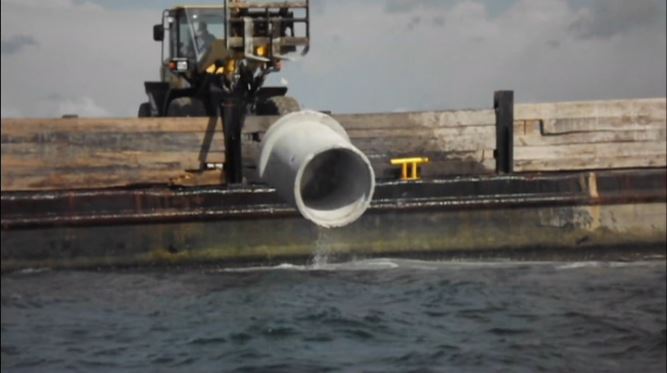Note from Storm: While building artificial reefs can in no way be considered “reef restoration”, I consider it a regenerative activity for several reasons:
- It replaces lost habitat: ocean creatures have lost vast amounts of habitat to human development in recent centuries, leaving young fish fewer places to shelter from predators and thus survive to breeding age;
- It repurposes abandoned materials and assets: whether concrete from dismantaled highways or subway cars from renovated public transit systems, this stuff has to go somewhere. Why not put it in a relatively lifeless barren sandy area of the ocean floor, and give “homeless” wildlife a place to live?
- It revitalizes fisheries and related economies: There are many examples from around the world of destitute fishing villages and regions having been brought back to economic life as a result of artificial reefs. We must remember that most sea creatures are incredibly fecund, often laying thousands–even tens of thousands–of eggs in the hope that a few will find safety. The more such refugia we create, the greater the percentage of offspring that will live to reproductive age.
From the article: A barge bobbed in the Atlantic Ocean as a bulldozer nudged concrete barriers and cylinders into the water below.
While the concrete scraps may have outlived their usefulness on land, on Wednesday they were set to become the backbone of the first near-shore artificial reef in Volusia’s coastal waters and in the northeast part of the state.
Not only will fish and other sea creatures flock to the labyrinth of concrete structures, but county officials say they hope it becomes a destination for fishermen, kayakers and divers.
“We’re turning an underwater desert into an oasis,” said County Manager Jim Dinneen. “This is a game-changer in terms of bringing this opportunity closer to shore.”

